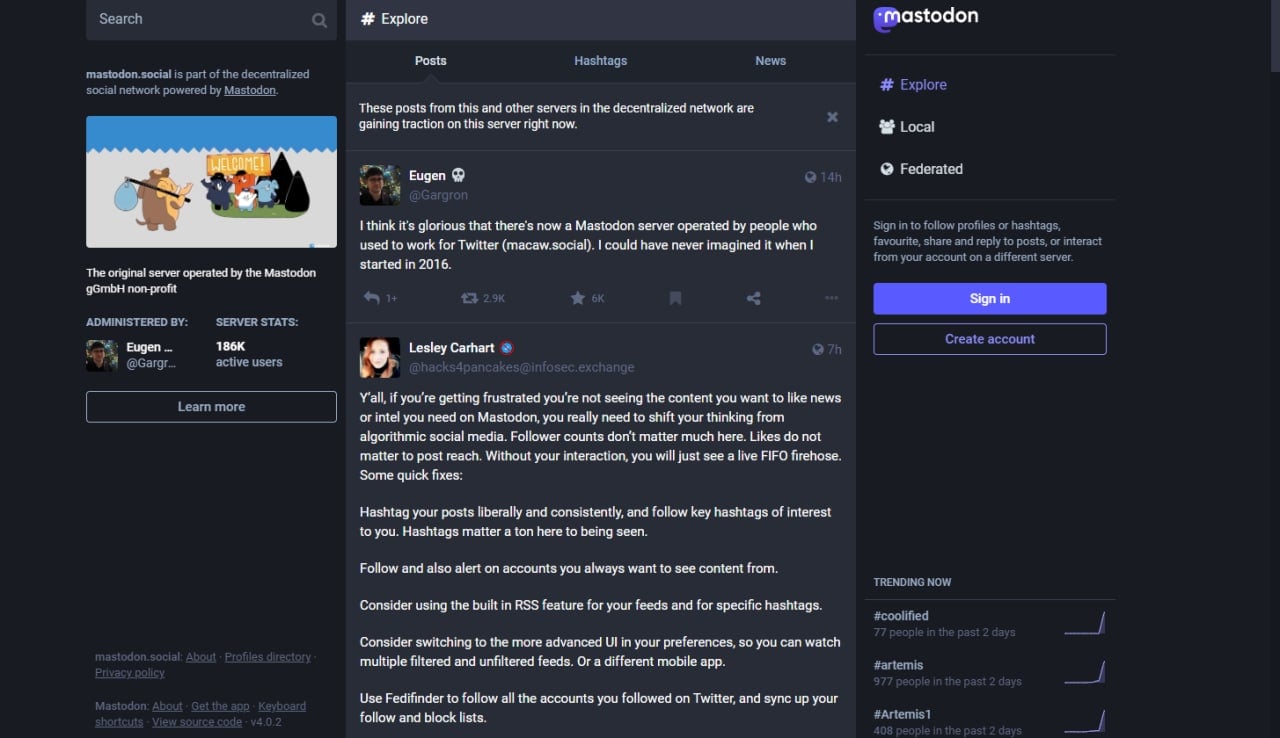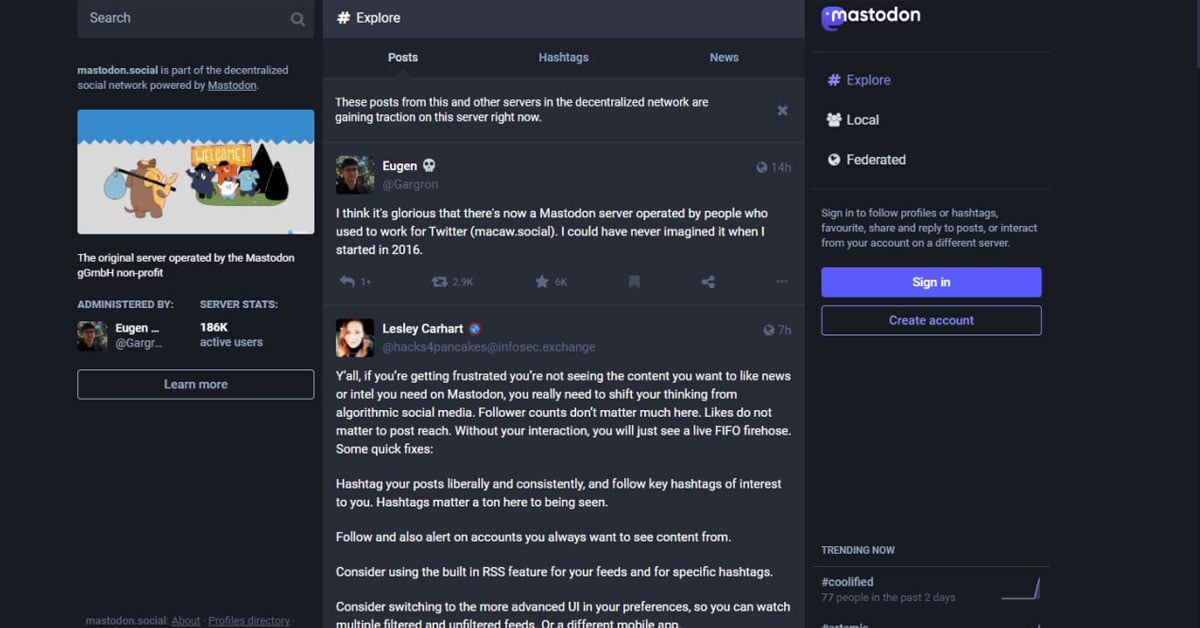Hate Twitter? Or do you hate the new chief?
Well, either way, you’re in luck.
The New Kid In Town
Just like how Vine died and was revived through Tiktok, there’s a new kid in town that might give Twitter a chase for their money.
Introduced in 2016, Mastodon brands itself as the “free, open-sourced decentralized social media platform”, while also calling itself “a viable alternative to Twitter”.
The platform got its name from an extinct relative of both the mammoths and elephants and was launched by software engineer Eugen Rochko, who also led its development with Mastodon gGmbH, a German nonprofit company.
How Does it Work?
Since Mastodon is an open-source platform, that meant that anybody can access, modify, and redistribute its original source code. Anyone can construct their own Matsudon platform, alternatively called a server, with rules and regulations that only apply to that server.
Likewise, by spotting and resolving issues, introducing new features, and localizing Mastodon’s UI into other languages, anyone can contribute to the code that powers the social media platform.
Of course, with it being a free-for-all, that also includes not being able to restrict who you don’t want to use yours.
Mastodon Vs Twitter
You see, Twitter is a single social network, which means that users exclusively register and can only post material there.
Mastodon, however, is a federated platform, which meant it’s a collection of social networks that can be linked together. Ownership will still belong to the server’s owner.
You can think of it as you creating your own social media network with “Mastodon’s help”.
Mastodon also presents posts chronologically rather than according to an algorithm, like what Twitter does.
The platform is free of advertisements as well, thanks to its crowdfunding efforts. These efforts include the two servers that Mastodon oversees; Mastodon Social and Mastodon Online, both of which are funded through Patreon.
Visually, Mastodon does resemble Twitter, but its user interface is more like Discord, where users may join servers with their own cultures and rules.

Interestingly, the company cannot compel or enforce its will on its user or server owners. That includes measures like establishing content moderation policies or guidelines for what posts to keep up or remove.
The only similarity between both companies is that you can block someone so that their post does not appear on your feed.
Thank god.
How to Join?
You have to register for an account on a server to join Mastodon.
The more challenging part of this process may be setting up your own server (remember the part about “creating your own social media network”?).
You will need a website, an internet-connected virtual computer system, and an email service, all on top of hosting it yourself.
Moreover, your computer needs to install several programming languages and security protocols. Only after doing so, you can download the code for Mastodon.
For those who are illiterate when it comes to anything tech, fret not.
There are providers that host and manage Mastodon servers. Likewise, there are also businesses that offer a comprehensive guide for people who want to set up their own servers, which does not require using Mastodon, and therefore no signup is needed.
Would it be a TikTok?
Only time will tell.
Featured Image: Mastodon



